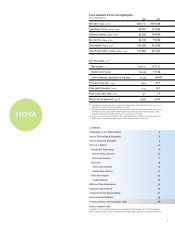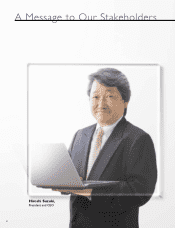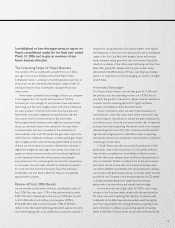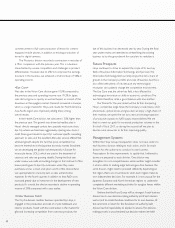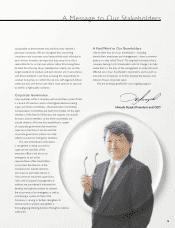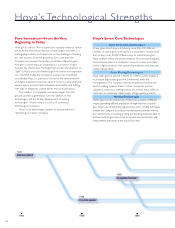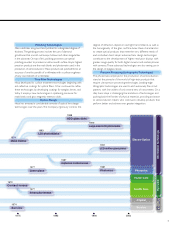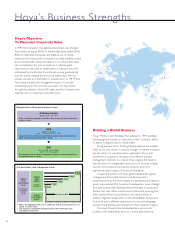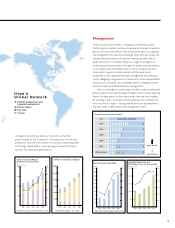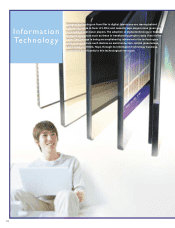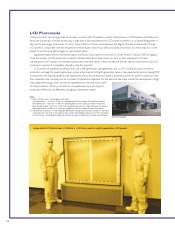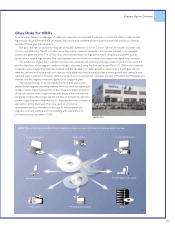Pentax 2006 Annual Report Download - page 8
Download and view the complete annual report
Please find page 8 of the 2006 Pentax annual report below. You can navigate through the pages in the report by either clicking on the pages listed below, or by using the keyword search tool below to find specific information within the annual report.
Hoya’s Technological Strengths
1940 1945 1965
1941
Optical glass
1945
Crystal glass
1962
Eyeglass lenses
Hoya got its start in 1941 as Japan’s first specialty maker of optical
lenses. At the time, the production of optical glass was seen as a
leading-edge industry, and Hoya took on the challenge of building
this new business from the ground up. Ever since then, the
Company has pursued the endless possibilities offered by glass.
And glass is more than just a material; it is a conveyor of light.
Another key theme since the beginning has been the emphasis on
“light” in Hoya’s pursuit of technological innovation and expansion
into new fields. Today, the Company’s business has broadened
considerably. Hoya is a partner of choice for the semiconductor
and digital equipment industries when it comes to ultra-advanced
electro-optics, and also helps individuals lead healthy and fulfilling
lives with its eyeglasses, contact lenses and crystal products.
The creation of completely new technologies from the
ground up, their augmentation with the addition of new
technologies, and the further development of existing
technologies—Hoya’s history is a story of continuous
technological innovation.
Hoya’s core technologies support its development as a
“technological creator” company.
Glass Formation Technologies
At any given time, Hoya is producing more than 100 different
varieties of optical glass, working from a proprietary “recipe book”
that contains over 50,000 different ways to manufacture glass.
Hoya carefully selects the purest materials from around the globe,
and combines them in a multitude of ways to create an endless
variety of glass products with optical characteristics that precisely
match market needs.
Glass Melting Technologies
Hoya melts glass at around 1,300ºC to 1,500ºC, which enables it
to produce high-quality glass that is extremely even and
homogeneous. The Company introduced platinum furnace and
electric melting systems ahead of other companies, and has
adopted a continuous melting process. As a result, Hoya offers its
customers an extremely stable supply of high-quality products.
Molding Technologies
Molten glass can be continuously molded into a variety of different
shapes, permitting efficient production of large volumes of optical
glass. Hoya’s use of extremely high-precision press molding techniques
enables the Company to produce molded aspherical lenses without
the need for time-consuming grinding and polishing processes. Best of
all, these technologies allow Hoya to conduct mass production with
measurement tolerances at the sub-micron level.
Pure Innovation—From the Very
Beginning to Today
Hoya’s Seven Core Technologies



